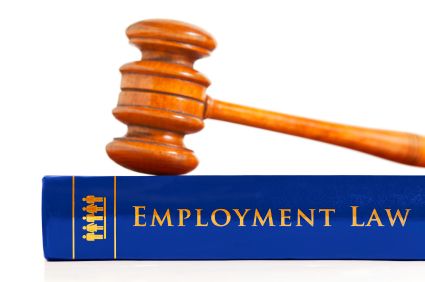
Employment Law Solutions: Protecting Employers and Employees
admin
- 0
Employment laws play a crucial role in protecting both employers and employees in the modern workplace. These laws establish a framework that ensures fair treatment, prevents discrimination, and promotes the overall well-being of all parties involved. By understanding and implementing effective employment law solutions, businesses can create a harmonious work environment and foster a prosperous workforce.
Understanding Employment Laws
Employment laws encompass a wide range of regulations and policies that govern the relationship between employers and employees. These laws can vary from one jurisdiction to another, but commonly cover areas such as minimum wage, working hours, employee benefits, workplace safety, discrimination, and harassment. It is crucial for both employers and employees to have a clear understanding of the employment laws that apply to their specific situation. Employers must familiarize themselves with labor laws to ensure compliance and avoid potential legal risks. Similarly, employees should be aware of their rights to protect themselves from exploitation and unfair treatment.
Protecting Employers Through Employment Law Solutions
Employment law solutions provide valuable tools for employers to uphold legal compliance, minimize legal disputes, and protect their business and reputation. Here are some key strategies employers can implement:
Proactive Compliance Measures
Employers should stay updated with the latest employment laws and regulations that apply to their industry. They should establish internal policies and procedures that adhere to these laws, including fair hiring practices, employment contracts, anti-discrimination policies, and clear guidelines for employee conduct.
Employee Handbook
An employee handbook is a comprehensive guide that outlines the company’s policies, procedures, and expectations. It should cover topics like employment terms, codes of conduct, benefits, and dispute resolution processes. A well-drafted employee handbook ensures that employees are aware of their rights and responsibilities, and can serve as a useful reference for both management and staff.
Employment Contracts
Clear and well-drafted employment contracts provide legal protection to both employers and employees. These contracts should outline the terms of employment, including job description, compensation, benefits, working hours, and termination clauses. By having a written agreement, potential misunderstandings and disputes can be avoided, promoting a healthy employer-employee relationship.
Training and Education
Providing regular training and educational programs on employment laws and workplace policies can empower employees with knowledge and awareness. Employers should invest in training sessions that educate staff about their rights and obligations within the organization. This not only helps prevent legal issues but also promotes a positive work environment and employee satisfaction.
Protecting Employees Through Employment Law Solutions
Employment law solutions also play a critical role in safeguarding the rights and well-being of employees. Here are some important aspects that help protect employees:
Anti-Discrimination Measures
Employment regulations enforce strict anti-discrimination policies that make it illegal to discriminate against employees based on their race, gender, age, religion, disability, or other protected characteristics. Employers need to create a workplace culture that encourages diversity and inclusion, and promptly addresses any discrimination complaints or concerns raised by employees.
Harassment Prevention
Employment laws require employers to foster a harassment-free work environment. This includes implementing measures to prevent sexual harassment, bullying, or any other form of workplace harassment. Employers should establish clear reporting mechanisms and investigate complaints promptly to protect their employees from any form of mistreatment.
Health and Safety
Workplace safety regulations aim to protect employees from hazards, accidents, and injuries. Employers must take necessary precautions to provide a safe working environment, including regular inspections, appropriate training, and adoption of safety protocols. Employees should be aware of their rights regarding occupational health and safety and report any concerns to their employers.
Fair Remuneration and Working Conditions
Employment laws set minimum wage standards, working hour limits, and other provisions to ensure fair remuneration and working conditions. Employers must comply with these laws and provide employees with adequate compensation, benefits, and work-life balance. Employees can seek legal remedies if they are not receiving the fair treatment they are entitled to under these laws.
Conclusion
Employment law solutions play a vital role in protecting the interests of both employers and employees. By understanding and implementing these solutions effectively, businesses can establish a fair and legally compliant work environment that fosters productivity and success. Employers should proactively adhere to employment laws, while employees must be aware of their rights to ensure a mutually beneficial relationship in the workplace. Together, these efforts contribute to a harmonious and thriving work environment.

